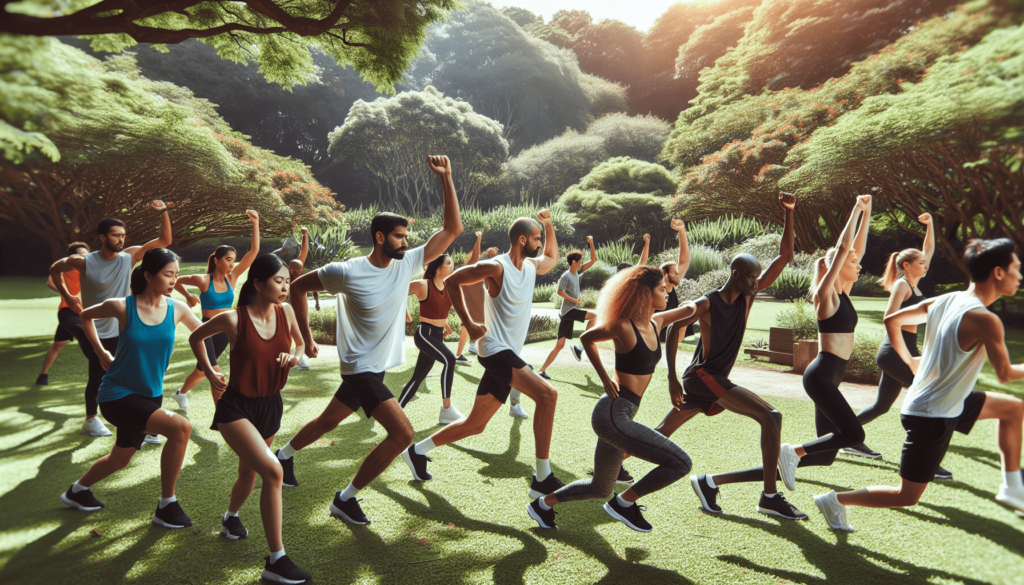Ready to kickstart your workout routine with a burst of energy? Understanding which warm-up exercises best prepare your body for the physical challenges ahead can make a substantial difference in your performance and safety. This article will explore various effective warm-up exercises tailored to energize your muscles, increase your heart rate, and enhance your flexibility. Whether you’re gearing up for a vigorous run, a strength training session, or a competitive sport, beginning with the right movements ensures you’re set up for success, reducing the risk of injury and maximizing your workout efficiency. Let’s dive into some top-notch strategies to activate your body before you hit the ground running! Ever wondered why fitness enthusiasts and athletes constantly emphasize the importance of warm-up exercises? You might think skipping straight to your workout saves time, but doing so could be setting you up for injuries and less effective sessions. Warm-up exercises are crucial because they prepare your body and mind for the physical activity ahead, ensuring you perform at your best and stay injury-free.
Understanding Warm-Up Exercises
Warm-up exercises are activities that gradually increase your heart rate and circulation. They also involve the important job of loosening up the joints and increasing blood flow to the muscles you’ll be using during your workout. These exercises are low intensity and help to prepare the body for the higher intensity exercises that follow in a typical workout session.
Why Warm-Up?
By incorporating effective warm-up exercises into your routine, you can enjoy a slew of benefits:
- Increased Muscle Temperature: Warmer muscles are more pliable, reducing the risk of strains and sprains.
- Enhanced Blood Flow: This supplies essential nutrients and oxygen to your muscles, boosting their performance and efficiency.
- Mental Preparation: Warm-ups serve as a mental checklist, allowing you to focus and strategize for the session ahead.
Types of Warm-Up Exercises
Depending on your activity, certain types of warm-ups may be more beneficial than others. Here’s a breakdown of various warm-ups and who they’re best for:
General Warm-Ups
These involve low-intensity, whole-body activities that are not specific to the upcoming physical activity. They’re great for those who engage in a general fitness routine.
- Walking or Slow Jogging: Ideal for getting the heart rate up without exerting too much stress on the body.
- Jump Rope: A fun, full-body activity that elevates your heart rate and sharpens your coordination.
- Dynamic Stretches: These involve moving parts of your body through their full range of motion. Examples include leg swings, arm circles, and hip rotations.
Sport-Specific Warm-Ups
For athletes or individuals engaged in specific sports, tailored warm-ups can prepare the body more effectively.
- Basketball: Includes activities like light shooting, dribbling, and lay-up drills.
- Soccer: Focus on jogging across the field, practice dribbling, and do short bursts of speed.
- Tennis: Start with shadow strokes before hitting light serves.
Mobility Exercises
These are designed to increase the range of motion around your joints, which is perfect before workouts involving lifting or full-body sports.
- Hip Circles and Walks: Good for opening up the hips, crucial for squats or any lower-body movement.
- Shoulder Rolls: Beneficial for upper-body workout days or sports involving throwing.
- Ankle Bounces: Great for runners or those doing sports that require lots of footwork.

Creating an Effective Warm-Up Routine
Having a set routine can simplify your warm-up process while ensuring that you cover all necessary aspects of preparation. Here’s how you can construct an effective warm-up routine tailored to your workout.
Step 1: Start With General Low-Intensity Activity
Begin with 5-10 minutes of a low-intensity activity like walking, slow jogging, or cycling. This step is about slowly elevating your heart rate and temperature.
Step 2: Incorporate Dynamic Stretches
Spend another 5-10 minutes on dynamic stretches. Remember, these are not the same as static stretches, where you hold a position. Dynamic stretches involve movement and help your body prepare better for motion.
Step 3: Include Sport-Specific or Activity-Specific Drills
If you’re preparing for a sport or a specific form of exercise, use the next 5 minutes to engage in specific drills that mimic the movements you’ll be performing during your workout.
Step 4: Incorporate Mobility Work for Problem Areas
If you have areas that are particularly tight or prone to injury, now’s the time to focus on those. Spend a few minutes on mobility exercises targeting these spots.
Step 5: Gradually Increase Intensity
As you near the end of your warm-up, incrementally increase the intensity of your movements. This will ensure that there isn’t a sudden spike in intensity when you start your main workout.
Sample Warm-Up Routine
Here’s a simple, 15-minute warm-up routine that you can adapt based on your intensity level and type of workout:
| Time | Activity |
|---|---|
| 0-5 min | Walk to light jog |
| 5-10 min | Dynamic stretches (leg swings, arm circles) |
| 10-12 min | Specific drills (e.g., dribbling for basketball) |
| 12-15 min | Incrementally intensify activities |

Cool Down: The Other Bookend
Remember, just as important as warming up is cooling down. After your workout, take a few minutes to lower your pace, dial back the intensity, and include some gentle static stretching. This helps in the recovery process and prepares your body for the next workout.
Final Thoughts
By now, you can see that skipping your warm-up is like skipping the first chapter of a book; you might get through it, but you miss essential context that enhances the whole experience. Think about your warm-up as setting the stage for top performance—something you simply don’t want to underestimate. Whether you’re a seasoned athlete or someone just embarking on a fitness journey, taking those extra minutes to warm up can drastically improve your workout quality and help you avoid unnecessary setbacks.
Remember, your fitness journey is unique to you. Feel free to adapt any of the above suggestions to better fit your specific needs and goals. Happy exercising!
